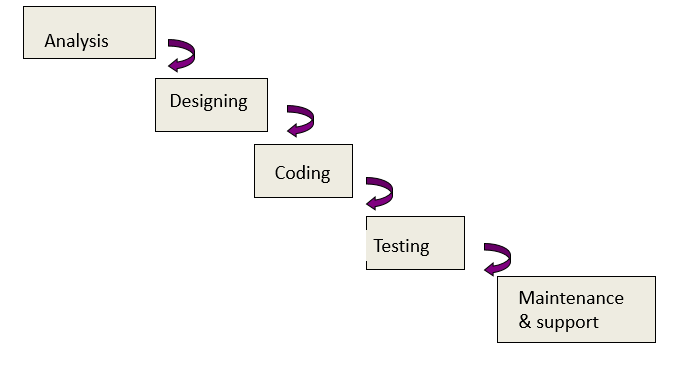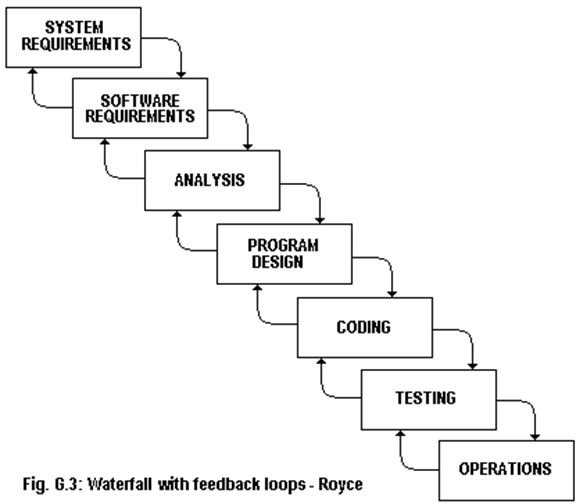-Waterfall model -Waterfall model in software engineering -Waterfall model diagram -Waterfall model example -Waterfall model phase -Software engineering concept -Software engineering MCQ -Software engineering Interview Question –Software engineering question paper –free course online –past papers -final year projects for computer science with source code -semester project ideas -computer programming -computer science interview questions- tutorial –cui
Linear Sequential Model , classic life cycle or the waterfall Software Process Model
A systematic, sequential approach to software development that begins at the system level and progresses through analysis, design
coding, testing, and maintenance.
- The Waterfall Model was first Process Model to be introduced.
- It is also referred to as a linear/sequential life cycle model.
- It is very simple to understand and use.
- In a waterfall model, each phase must be completed fully before the next phase can begin.
- This type of model is basically used for the for the project which is small and there are no uncertain requirements.
- At the end of each phase, a review takes place to determine if the project is on the right path and whether or not to continue or discard the project.
- In this model the testing starts only after the development is complete. In waterfall model phases do not overlap.


When to use Waterfall model?
- This model is used only when the requirements are very well known, clear and fixed.
- Product definition is stable.
- Technology is understood.
- There are no ambiguous requirements
- Sufficient resources with required expertise are available freely
- The project is short.
Drawbacks of waterfall model
- Very less customer interaction is involved during the development of the product.
- Once the product is ready then only it can be delivered to the end users.
- Once the product is developed and if any failure occurs then the cost of fixing such issues are very high, because we need to update everywhere from document till the logic.
The main Stategs in waterfall model

Design
Software design is actually a multistep process that focuses of four distinct attributes of a program; data structure, software architecture interface representations, and procedural detail. The design process translates requirements into a representation of the software that can be assessed for
quality before code generation begins. Like requirements, the design is documented and becomes part of the software configuration.
Code generation
The design must be translated into a machine readable form. The code generation step performs this task. If design is performed in a detailed manner, code generation can be accomplished mechanistically.
Testing
Once code has been generated, program testing begins. The testing process focuses on the logical internals of the software, assuring that all statements have been tested, and on the functional externals that is conducting tests to uncover errors and ensure that defined input will produce actual results that agree with required result.
Maintenance
Software will undoubtedly undergo change after it is delivered to the customer. Change will occur because errors have been encountered, because the software must be adapted to accommodate changes in its external environment ( e.g. a change required because of a new operating system or peripheral device), or because the customer requires functional or performance enhancements. Software maintenance reapplies each of the preceding phases to an existing program rather than a new one.
#Waterfallmodel#Waterfallmodelinsoftwareengineering#Waterfallmodeldiagram#Waterfallmodelexample#Waterfallmodelphase#Softwareengineeringconcept#SoftwareengineeringMCQ#SoftwareengineeringInterviewQuestion#Softwareengineeringquestionpaper#freecourseonline#pastpapers#finalyearprojectsforcomputersciencewithsourcecode#semesterprojectideas#computerprogramming#computerscienceinterviewquestions#tutorial–cui
#courses #pastpaper #Finalyearproject #tutorial #cui #project #programming #computer science #computersciecnemcq’s #computerscienceinterviewquestion

